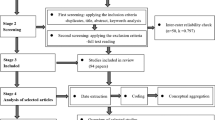Abstract
In this paper I study asimple game of the budgetary process. Thegame has three players. A spending proneminister, who proposes a budget, a primeminister, who accepts or vetoes, and abureaucrat who provides non-verifiableinformation about policy. The bureaucratis appointed by the spending minister. Ishow that in this setting public spendingis excessive. This result stems from theproposal power of the minister, and hisincentive to appoint a spending pronebureaucrat. Next, I examine two devices forcontrolling public spending: binding budgettargets imposed by the prime minister, anddelegating veto power to a spending aversefinance minister. It is shown that thelatter device is more effective than theformer device to curb a spending proneminister, because it not only reduces theproposal power of the spending minister,but also induces him to appoint lessspending prone bureaucrats.
Similar content being viewed by others
References
Alesina, A. and Rosenthal, H. (1995).Partisan politics, divided government, and the economy. Cambridge: Cambridge University Press.
Banks, J.S. (1991).Signaling games in political science Chur: Harwood Academic Publishers.
Calvert, R.L., McCubbins, M.D. and Weingast, B.R. (1989). A theory of political control and agency discretion.American Journal of Political Science 33: 588–611.
Chari, V.V., Jones, L.E. and Mariman, R. (1997). The economics of split-ticket voting in representative democracies.American Economic Review 887: 957–976.
Crawford, V. and Sobel, J. (1982). Strategic information transmission.Econometrica 50: 1431–1451.
Dewatripont, M. and Tirole, J. (1999). Advocates.Journal of Political Economy 107: 1–39.
Dixit, A. (1996).The making of economic policy. Cambridge: MIT Press.
Farrell, J. and Gibbons, R. (1989). Cheap talk with two audiences.American Economic Review 79: 1214–1223.
Gilligan, T. and Krehbiel, K. (1989). Asymmetric information and legislative rules with a heterogeneous committee.American Journal of Political Science 33: 459–490.
Hallerberg, M. and Hagen, J. von (1997).Electoral institutions, cabinet negotiations, and budget deficits within the European Union. CEPR Discussion Paper Series, No. 1555.
Letterie, W.A. and Swank, O.H. (1997). Learning and signalling by advisor selection.Public Choice 92: 353–367.
Meier, K.J. (1997). Bureaucracy and democracy: The case for more bureaucracy and less democracy.Public Administration Review 57: 193–199.
Niskanen,W. (1971).Bureaucracy and representative government. Chicago: Aldine-Atherton.
Niskanen,W. (1992). The case for a new fiscal constitution.Journal of Economic Perspectives 6: 13–24.
Peacock, Sir A.T. (1988). An economic analysis of economic advice giving.Atlantic Economic Journal 16: 1–10.
Romer, T. and Rosenthal, H. (1979). Bureaucrats vs. voters: On the political economy of resource allocation by direct democracy.Quarterly Journal of Economics 93: 563–588.
Stigler, G.J. (1963).The intellectual and the market place and other essays. New York: The Free Press of Glencoe.
Swank, O.H. and Robert, A.J. (2001). Why do policy makers give permanent power to policy advisors.Economics and Politics 13: 73–94.
Tanzi, V. and Schuknecht, L. (1997a). Reforming government: An overview of recent experience.European Journal of Political Economy 13: 395–417.
Tanzi, V. and Schuknecht, L. (1997b). Reconsidering the fiscal role of government: The international perspective.American Economic Reviewl Papers and Proceedings 87: 164–169.
Tirole, J. (1994). The internal organization of government.Oxford Economic Papers 46: 1–29.
Von Hagen, J. and Harden, I.J. (1995). Budget processes and commitment to fiscal discipline.European Economic Review 39: 771–779.
Wilson, J.Q. (1989). Bureaucracy: What government agencies do and why they do it. BasicBooks.
Author information
Authors and Affiliations
Rights and permissions
About this article
Cite this article
Swank, O.H. Budgetary Devices for Curbing Spending Prone Ministers and Bureaucrats. Public Choice 111, 237–257 (2002). https://doi.org/10.1023/A:1014903514262
Issue Date:
DOI: https://doi.org/10.1023/A:1014903514262




